Hello all! It’s taken me a while to get started on this edition of the newsletter, because nothing has struck my fancy lately and I’ve been getting a little panicky about it. But all is well! And three cheers for Woolley and Wallis — they recently posted the lots in their upcoming two-day Fine Jewellery auction, and thankfully something in there sent me haring down a whole new rabbit hole.
(By the way, I frickin’ love Woolley and Wallis sales. They usually have a ton of interesting 19th century stuff, and they photograph everything beautifully, which makes the practice of scrolling through a billion auction lots a much more pleasurable experience.)
So anyway, there I was, paging though the Day Two pieces and taking note of possible things to follow and/or write about, when I finally arrived at the last lot. That’s it up above. It’s a beautiful, tiny cup with a shape similar to an egg cup, and it’s completely encrusted with emeralds and diamonds. It’s gorgeous.
And then I read the description.
A rare emerald and diamond ‘zarf’ cup
Estimate: £50,000 - £100,000
Excuse me? What the eff is a zarf cup??
I’ll let the British Museum explain:
The word zarf is a transliteration of the Arabic for cup or vessel. In English it is generally used according to the Oxford English Dictionary to mean ‘a cup-shaped holder for a hot coffee-cup, used in the Levant, usually of metal and of ornamental design’.
So basically, it’s a holder for a cup of coffee. Zarf cups originated in Turkey and spread to other Ottoman Empire countries like Syria and Iran, where, as appraiser David Walker notes in this clip from the Antiques Roadshow, coffee was “imbued with a lot of ceremony, and so the receptacles to hold the drink could have been incredibly lavish and well-made.”
Zarf styles range from simple filigree metal forms like the Persian ones above (which reside in the collection of the Victoria & Albert Museum) to incredible gem-studded versions used by individuals eager to display their wealth. Their popularity continued to spread, and in the 19th century, goldsmiths in Geneva began to manufacture strikingly enameled zarfs for export to the Islamic market.
Some of the Swiss ones are SUPER GAUDY, but this ca. 1840 one isn’t too bad. It’s in the collection of the Metropolitan Museum of Art, AND it’s also somehow a music box??? I can’t figure that out, but it’s gold with light blue, red and white enameling and rose-cut diamonds. The silver gilt liner was a later addition.
This is the most explicitly coffee-related example I’ve found so far. It’s a 19th century Ottoman silver gilt zarf that was sold by Christie’s in 2003, and it features a band of enameled thuluth script — a style of Islamic calligraphy that uses more curved and oblique lines — that reads “the perfection of well-being is in coffee, may the delights be complete.” The porcelain cup insert is a later addition.
But back to the Wooley and Wallis zarf that inspired this newsletter. Estimated at £50,000 – £100,000, it dates to the 19th century and features emeralds calibré-cut to fit alongside lines and festoons of pavé-set rose-cut diamonds. Interestingly, a very similar emerald and diamond footed zarf — with a swirlier pattern — is in the collection of the Louvre, and they also have another version, in ruby:
I’m completely charmed by the sightly drunken lean it’s got. It’s a slouching zarf. A disaffected teenager zarf.
Back in 2004, Bonhams sold a gorgeous 19th century zarf with rubies and diamonds set in gold that was most likely made in Turkey for the Ottoman Court:
Like the Woolley & Wallis and Louvre pieces, the rubies in this zarf are set open-backed, so light can shine through them like stained glass. Bonhams notes that the piece would have taken months to produce in the court workshops in Istanbul, where Ottoman and European craftsmen worked side-by-side. It sold for £23,900 (US$ 26,795).
So I’m basically just gonna keep throwing zarfs at you now, because they’re so pretty and also so varied — they’ve really been a pleasure to research.
This 19th century golden zarf from the Qajar Dynasty (the royal dynasty of Iran from 1789 to 1925) showcases a pattern of turquoise stones of graduating sizes that extend down to the foot. The interior and base are lined with silver.
It was sold by Christie’s in 2001 for £4,465 ($4,939), and they note that “identical zarfs to this, even with the cusped rim and silver lining, are to be found in the Persian crown jewels. The quality of this cup is fully up to that of those made for the Persian crown.”
This dangerously pointy zarf was made in Geneva, circa 1840. Again, geometric patterns of calibré-cut rubies sit amid borders of gold and diamonds, and three diamond garlands set with gigantic old-mine-cut diamonds are placed between three enameled panels. The panels are set with what Christie’s describes as diamond and silver “military trophies,” two of which feature the Turkish crescent.
A quick note about those calibré-cut stones: Most of the time, rough gemstones are cut to both bring out the best qualities of the stone and waste as little rough as possible. But here — and in the other gemstone zarfs I’ve shown — the rubies have been specifically cut to fit the design of the zarf, which is incredibly labor-intensive and also can potentially waste a large amount of the original rough. In a situation like this, though, it’s a feature rather than a bug, because it serves as further evidence of the extreme wealth of the owner.
This piece sold at Christie’s in 2012 for $194,500.
This lovely little enameled zarf was created by Jean-Valentin Morel (1794-1860), an extremely successful French goldsmith and lapidary who spent stretches of his career working in Paris and London. He created this intricately enameled piece in London sometime around 1850, specifically for the Ottoman market, with six central medallions that depict views of the Bosphorus. It was sold by Sotheby’s back in 2009, no sale price listed.
I’ll close this out with yet another Christie’s lot (they really had the best range of past examples!). This is a 19th century Ottoman Turkish set of six silver zarfs that has miraculously remained intact — it still has its six saucers and porcelain cups, as well as the original box. The saucers in particular are an excellent example of the delicacy of the filigree work.
After scrolling through all this beautiful craftsmanship and opulence, it’s a bit of a letdown that our own zarfs are nothing but cardboard sleeves. But I guess they serve their purpose, just as the lux ones did. And now I'm really looking forward to asking a total stranger at my local Wawa1 to pass me a zarf.
Enjoy the rest of your week, and thank you all for your support!
M xxx
Beloved (unless you’re from Pittsburgh) East Coast convenience store chain


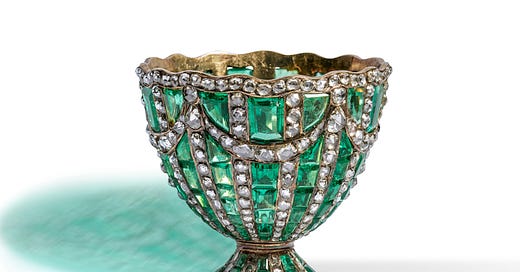

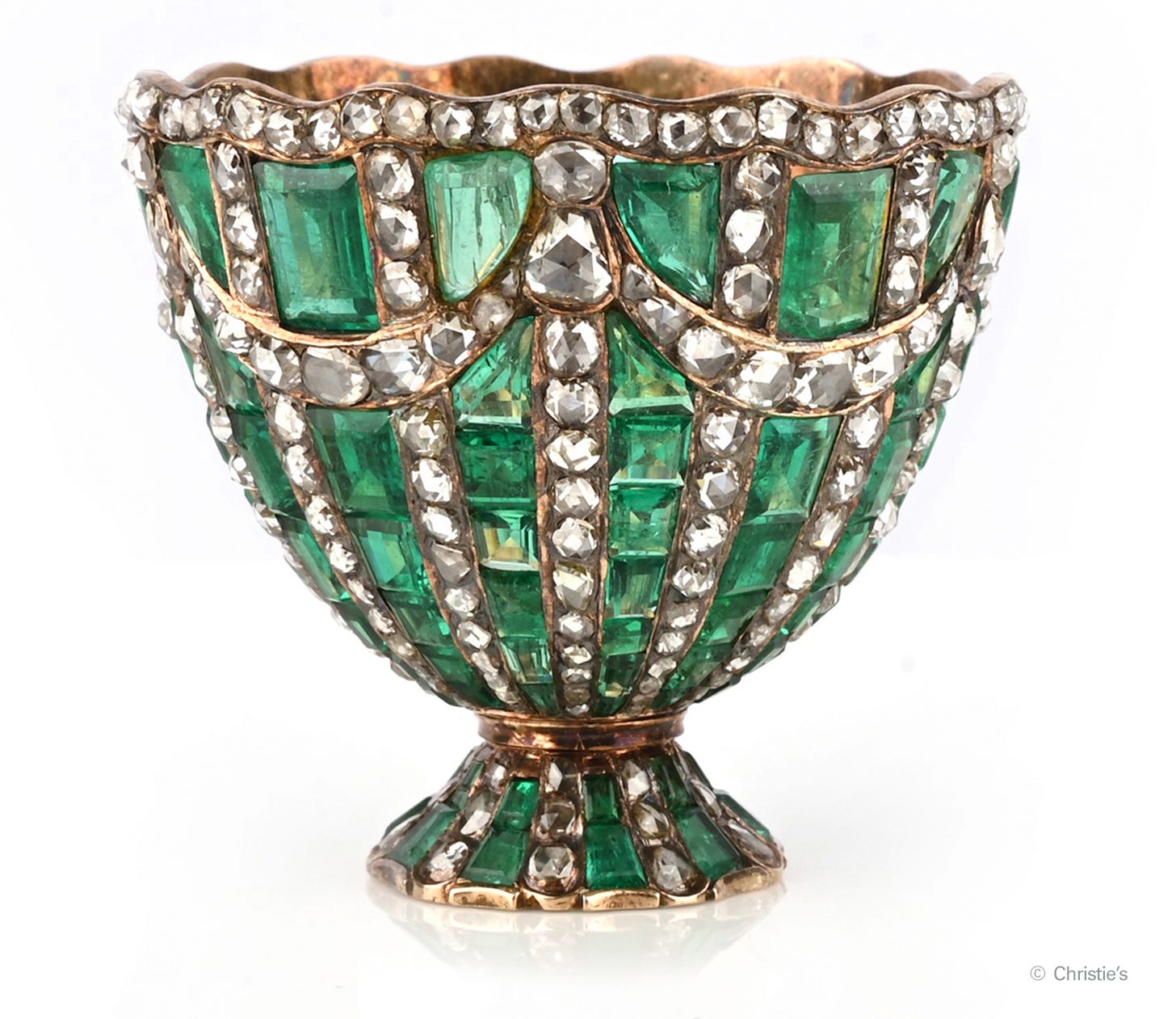
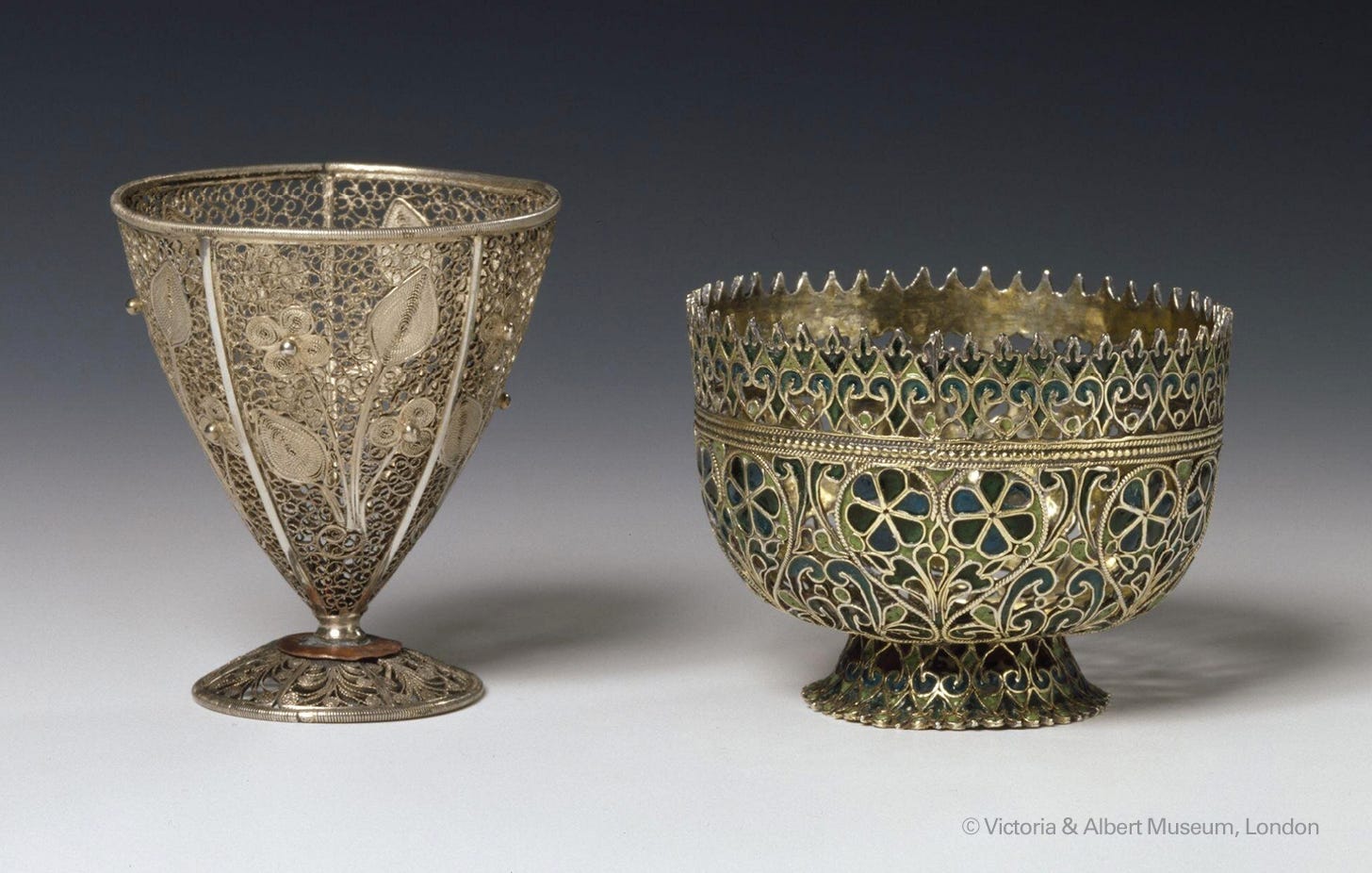
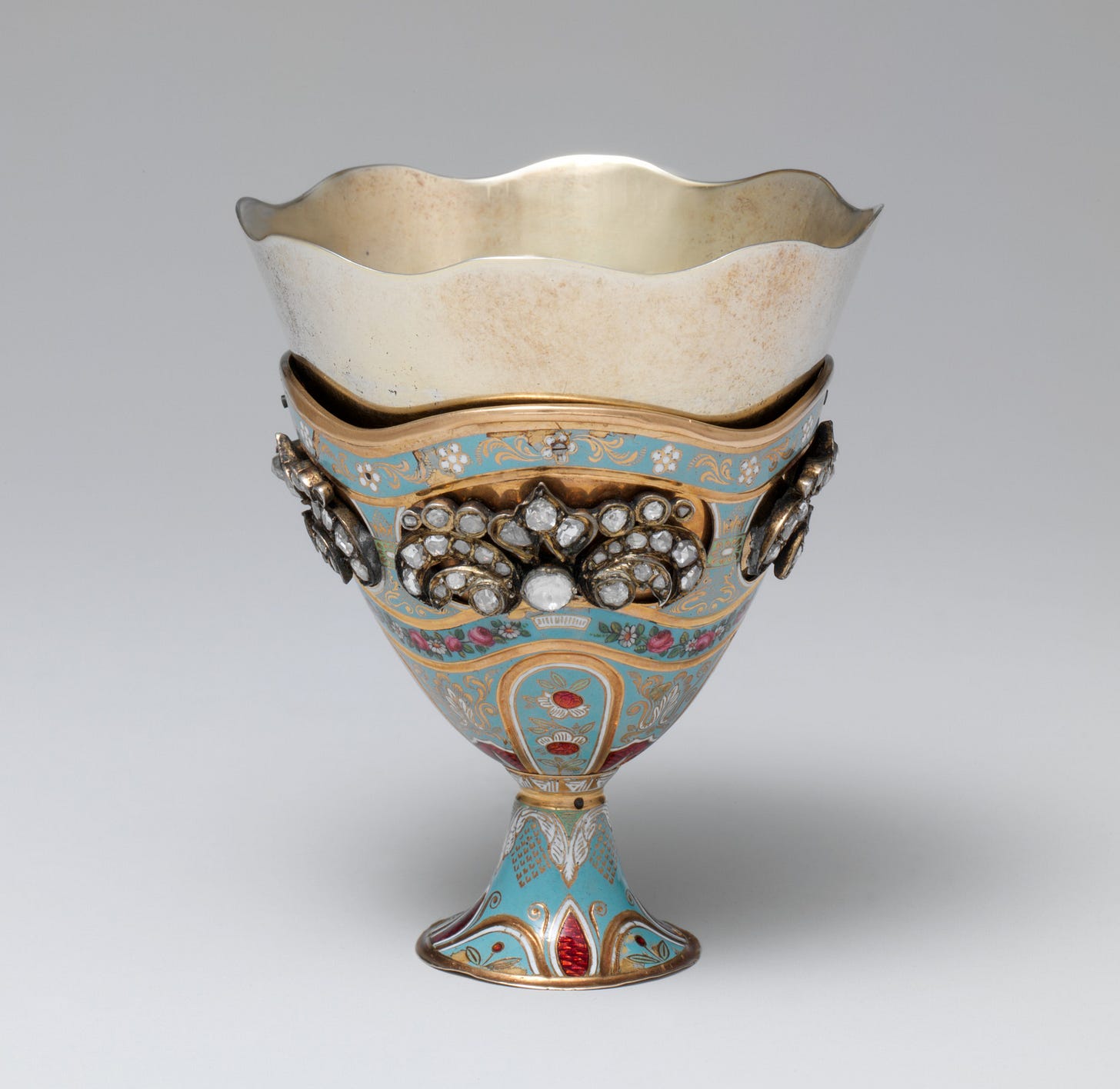
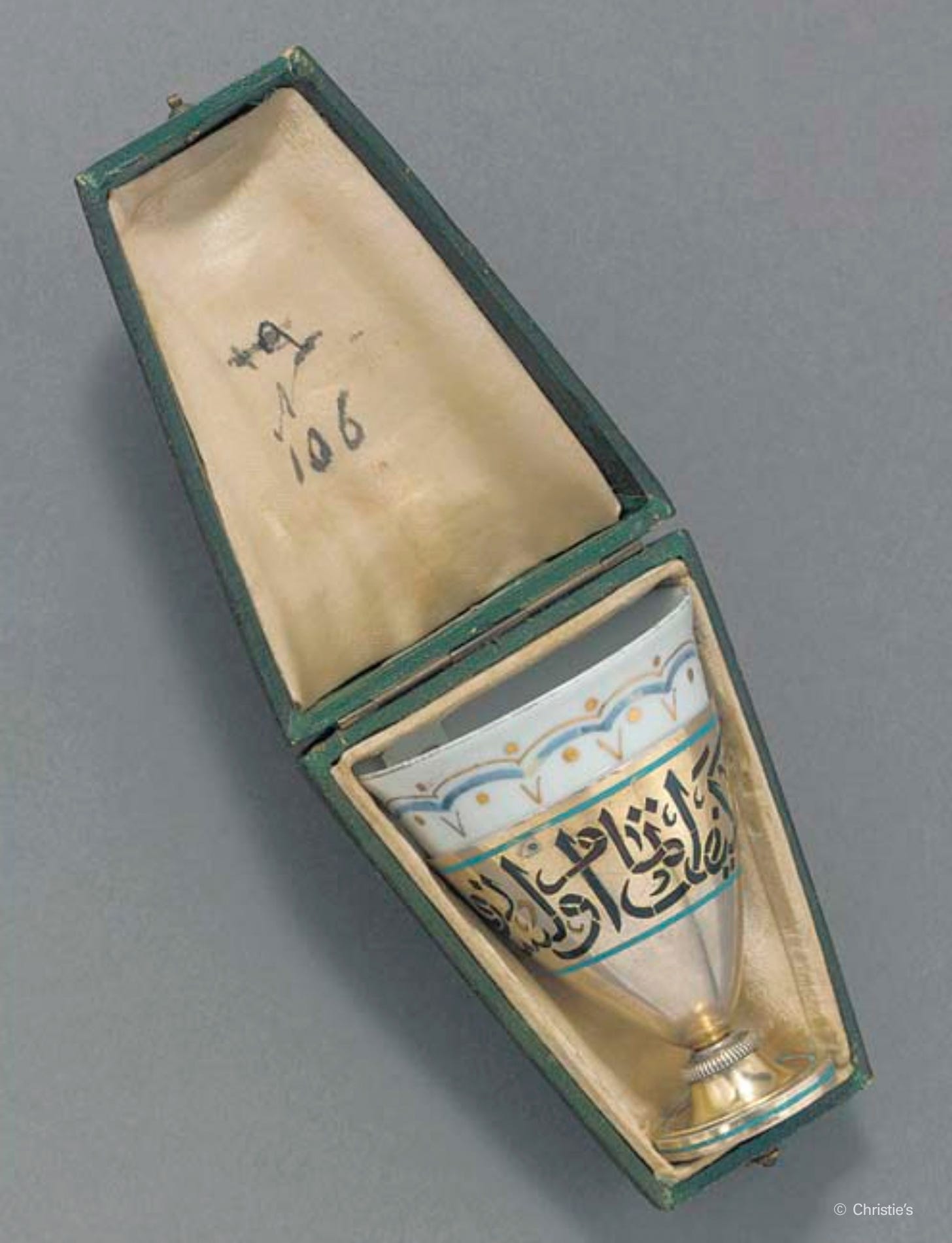
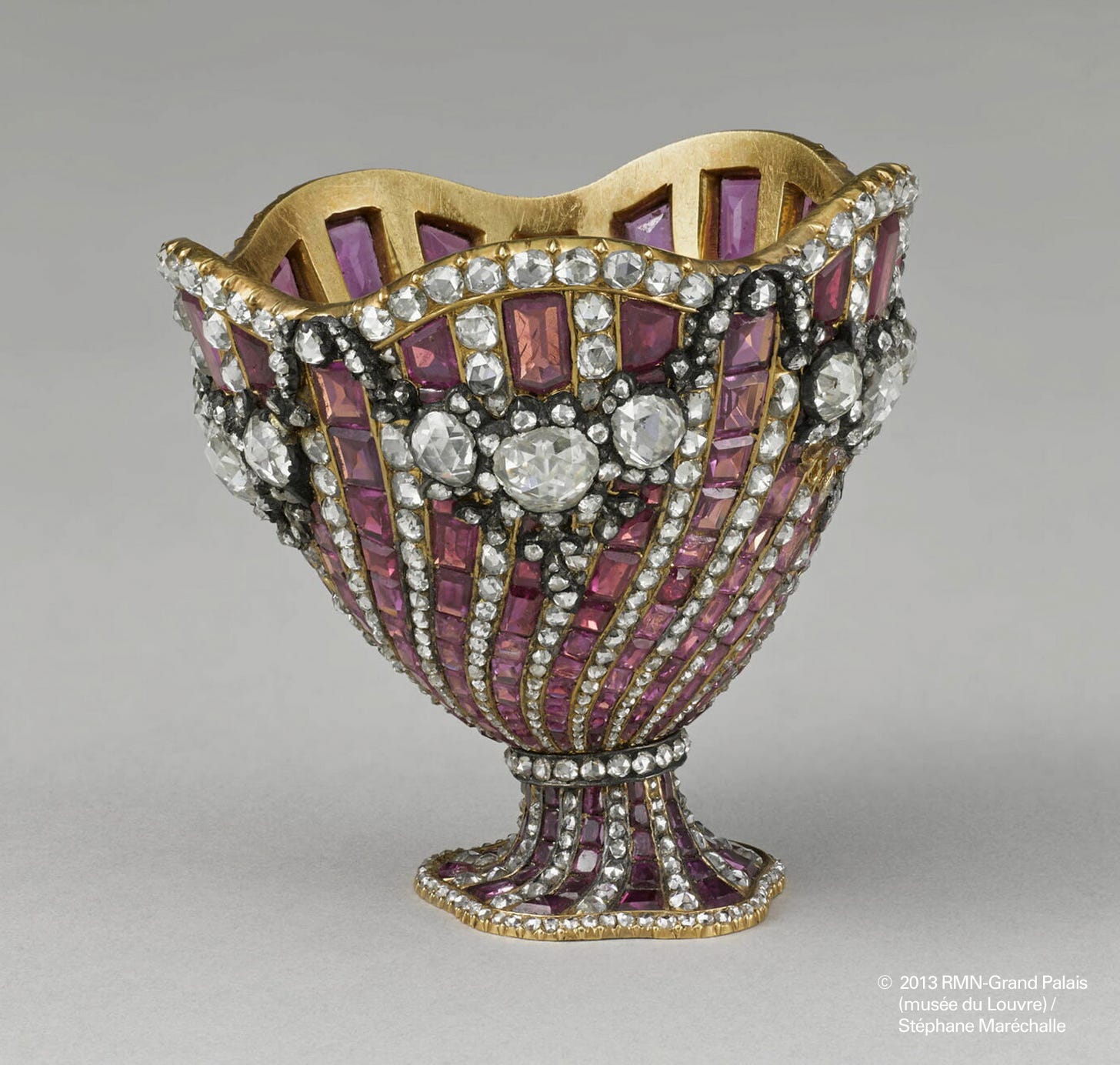
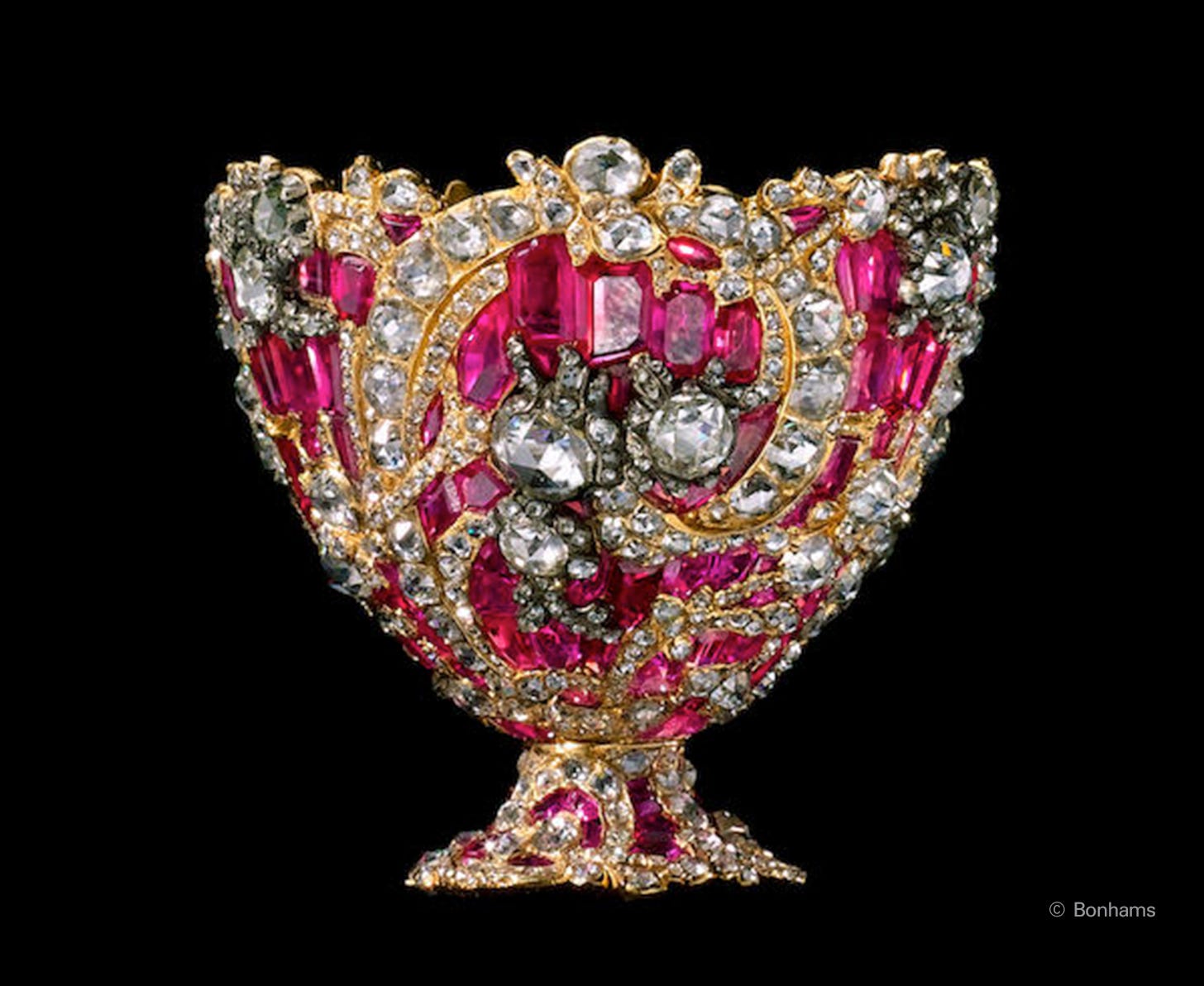

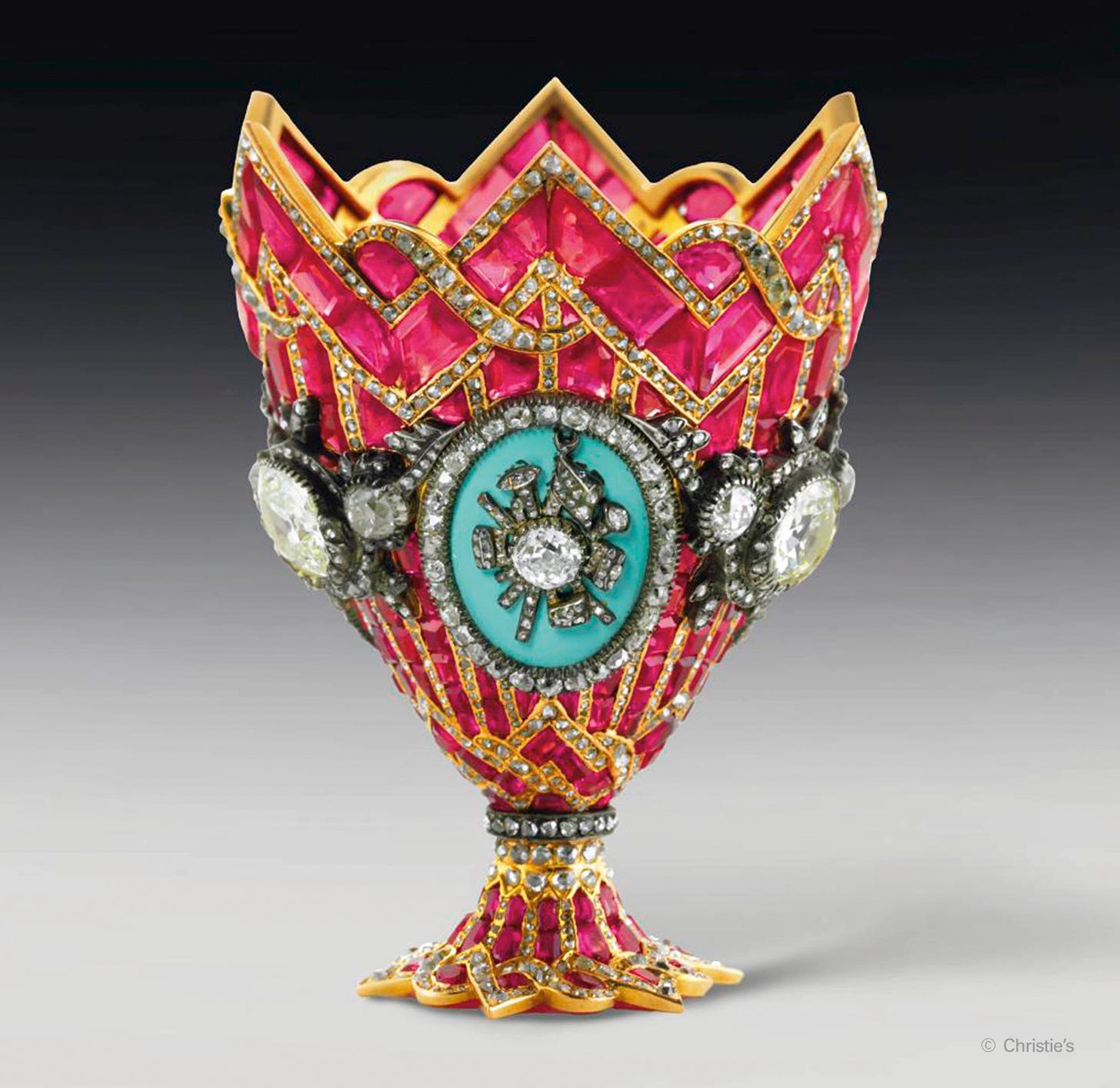
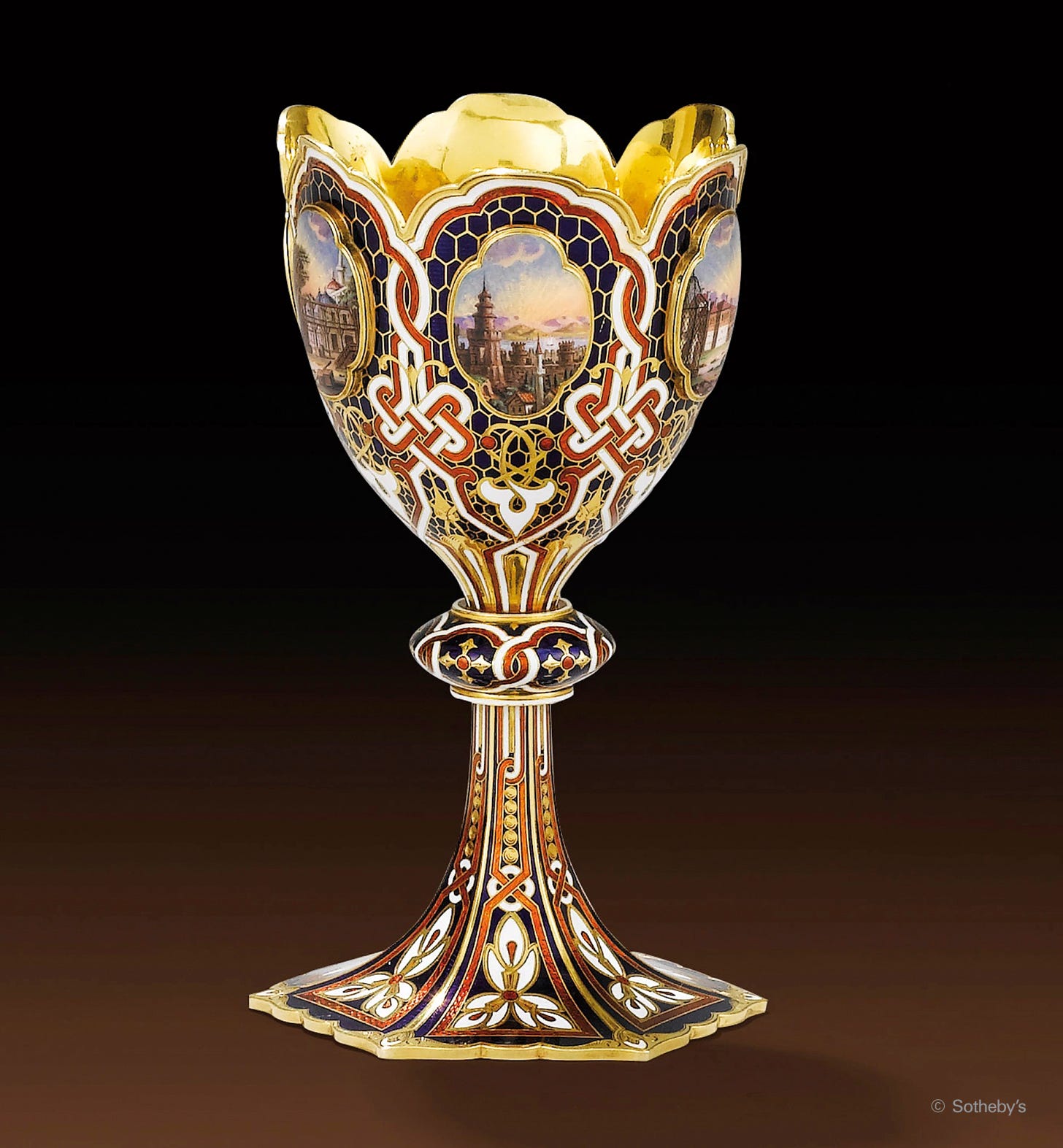
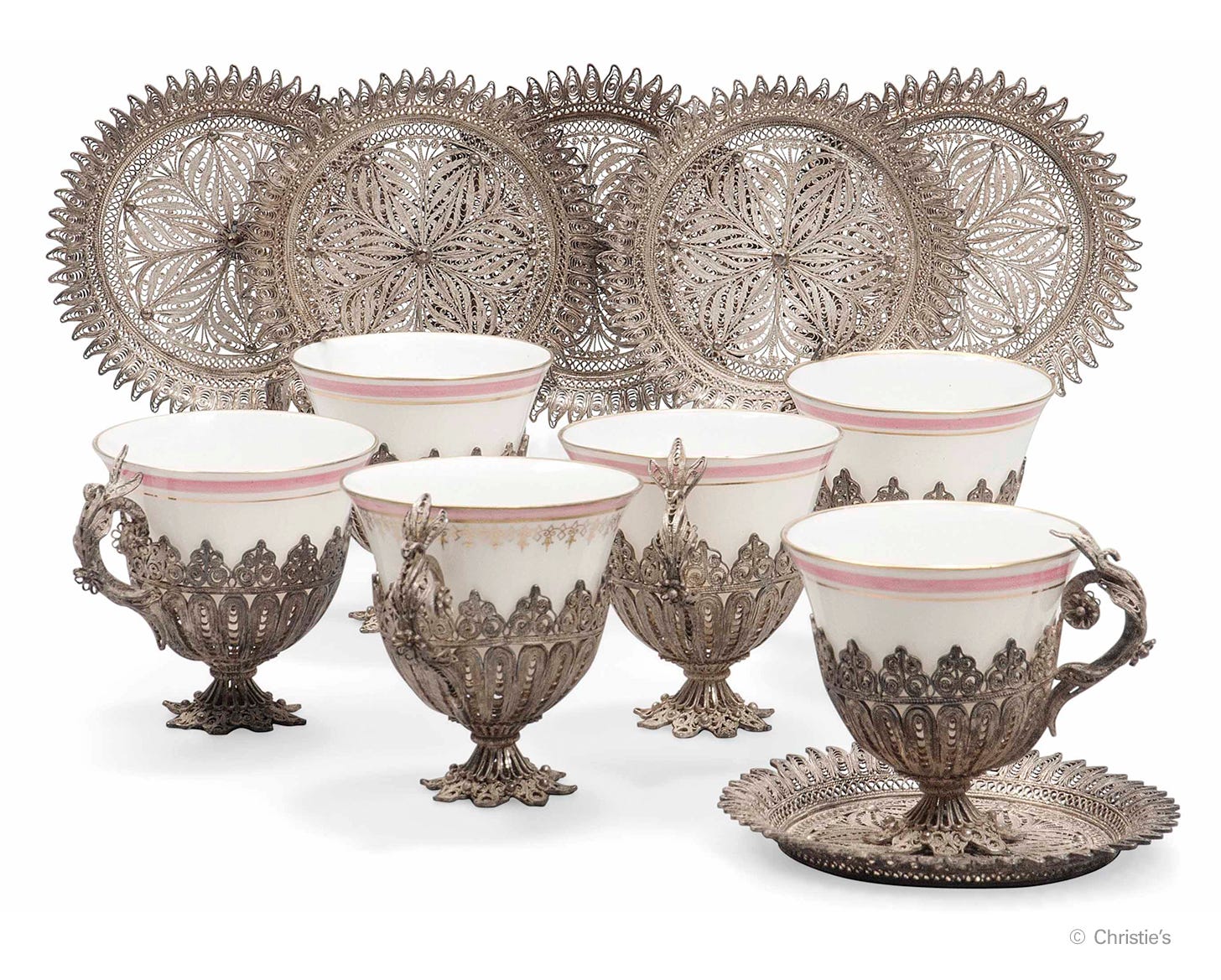
Wow, that Turkish Silver set. Imagine whipping that out after a small dinner party. We'd need some of that coffee that Esky used to bring back from the Columbian mountain farms.
Brb, having "the perfection of well-being is in coffee..." tattooed on my body!